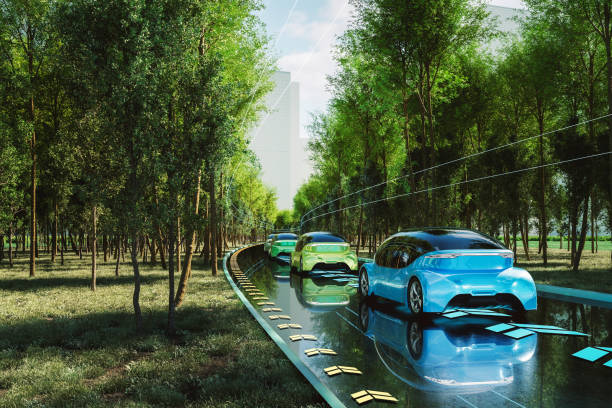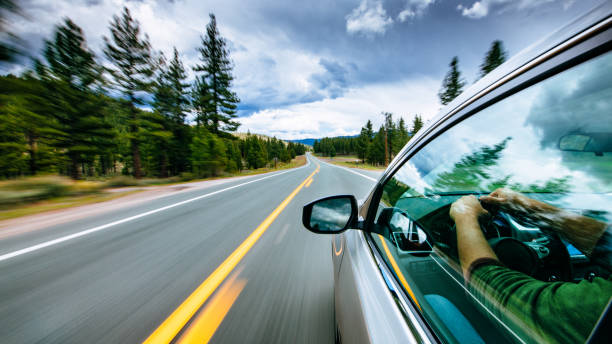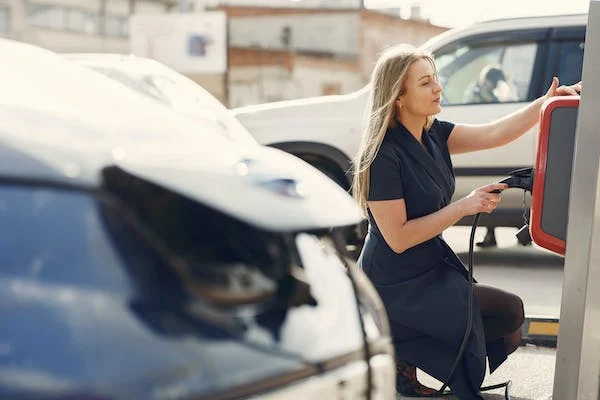As environmental awareness grows, adopting green driving habits has become essential for every car owner. From fuel efficiency to mindful maintenance, these eco-friendly tips not only reduce your carbon footprint but also contribute to a more sustainable future.
Also Read: The Art of Negotiation: Tips for Getting the Best Deal on a Car
What Is Eco-Conscious Driving and How to Save Fuel
Essentially, eco-conscious driving is about adopting driving techniques and methods that prioritize fuel efficiency and minimize environmental impact. Small changes to your driving habits can significantly reduce your carbon footprint, save on fuel costs, and contribute to a greener planet.
Traditional sustainable driving methods such as hard acceleration, hard braking, and excessive idling not only waste fuel but also increase exhaust fumes and vehicle wear. Eco-conscious driving, on the other hand, focuses on smooth acceleration and deceleration, maintaining a constant speed, anticipating traffic flow, and reducing idle time.
These principles improve fuel economy and contribute to a safer, more enjoyable driving experience.
What are the Top Green Driving Habits?
Here are a few green driving habits to help you achieve vehicular sustainability:
Maintain Your Vehicle
- Regular maintenance ensures optimal fuel efficiency.
- Keep your car well-tuned with timely oil changes, air filter replacements, and tire rotations.
Proper Tire Maintenance
- Underinflated tires can decrease fuel efficiency.
- Check tire pressure regularly and keep them properly inflated for better gas mileage.
Smooth Driving Habits
- Avoid aggressive driving behaviors like rapid acceleration and sudden braking.
- Smooth driving can significantly improve fuel efficiency and reduce emissions.
Lighten Your Load

- Remove unnecessary items from your car to reduce weight.
- Excess weight can decrease fuel efficiency, especially in smaller vehicles.
Plan Efficient Routes
- Use navigation apps to plan the most fuel-efficient routes.
- Minimize idling time and opt for highways when possible for smoother driving.
Turn Off the Engine
- Turn off your engine when parked for extended periods.
- Avoid idling, as it consumes fuel and contributes to unnecessary emissions.
Carpooling and Ridesharing
- Share rides with others to reduce the number of vehicles on the road.
- Carpooling and ridesharing are effective ways to lower carbon emissions.
Use Eco-Mode
- If your car has an eco-mode, engage it for optimized fuel efficiency.
- Eco-modes adjust various vehicle settings to conserve energy.
Choose Sustainable Fuels
- Opt for biofuels or renewable energy sources when available.
- Some regions offer eco-friendly fuel alternatives that reduce overall carbon emissions.
Consider an Electric or Hybrid Vehicle
- Electric and hybrid vehicles produce fewer emissions.
- Explore the possibility of transitioning to a more sustainable vehicle option.
Car Maintenance with Eco-Friendly Products
- Choose environmentally friendly car care products.
- Look for biodegradable cleaners and recycled materials for car accessories.
Practice Eco-Friendly Parking
- Choose shaded parking to reduce the need for air conditioning.
- Electric vehicle owners can look for charging stations with renewable energy sources.
Educate Yourself on Eco-Friendly Driving

- Stay informed about eco-driving techniques.
- Continuous learning can lead to the adoption of more sustainable driving habits.
Offset Your Carbon Emissions
- Consider carbon offset programs to compensate for your vehicle’s emissions.
- These programs support environmental initiatives to balance out your carbon footprint.
Advocate for Sustainable Transportation
- Support policies that promote sustainable transportation.
- Advocate for investment in public transportation and green infrastructure.
Overcoming the challenges of green driving habits
Like any new concept, green driving habits come with challenges and misconceptions. We want to address some common obstacles and offer expert tips on how to overcome them:
Clear up some common misconceptions:
There are common misconceptions about environmentally friendly driving, including the assumption that driving slowly is the most economical way. While a good speed is essential, driving for long periods can disrupt traffic flow and lead to dangerous situations. The key is to find a balance and use smart driving techniques that prioritize fuel efficiency without sacrificing safety.
Related: What Does CC Mean in an Engine?
Dealing with traffic jams:
Traffic jams can be frustrating, but that doesn’t mean you should abandon your environmentally friendly driving habits. Allowing enough time for travel and using navigation devices to avoid congested areas can help you drive in a quieter and more environmentally friendly way. Maintaining a constant speed, even in slow traffic conditions, can help minimize fuel consumption.
Sustainable Driving Strategies:
One of the biggest challenges in adopting green driving habits is resistance to change. To overcome this, start by making small changes to your driving habits and work your way up. Learn about the benefits of green driving habits and their positive impact on the environment. By sharing your knowledge with your friends and family, you can encourage them to join the eco-conscious driving movement.
Green Driving Habits: Real-Life Success Stories
To truly understand the power of sustainable driving, let’s look at some real-life success stories: Samuel, a taxi driver in a busy city, realized that his driving was impacting his income and the environment. By accelerating and braking more slowly, Samuel reduced his fuel costs and noticed significantly less wear and tear on his vehicle.
Inspired by his positive experience, Samuel began sharing eco-driving tips with other drivers, which created a ripple effect throughout the taxi community.
In another city, a group of environmentally conscious neighbourhood residents organized a carpooling effort. By coordinating schedules and taking turns driving to work, they reduced the number of vehicles on the road and minimized emissions. The initiative provided clean air and fostered a sense of community and camaraderie among participants.

These success stories show that eco-driving relies on individual action and collective effort to bring about positive change. By sharing our experiences and inspiring others, we can increase the impact of eco-conscious driving and contribute to a sustainable future.
Green Driving Habits and Technology: Tools for Sustainable Driving
In today’s technologically advanced world, green driving habits go hand in hand with cutting-edge tools and applications designed to enhance the driving experience while reducing the environmental footprint. Let’s take a look at some notable advancement in eco-friendly driving technology:
Eco-friendly Navigation Tools:
GPS systems and navigation apps no longer just guide us to our destination. They also help us choose the most fuel-efficient route, taking into account traffic congestion, road conditions, and even elevation changes. These tools enable eco-drivers to make informed decisions to minimize fuel consumption and emissions.
Eco-driving features in electric and hybrid cars:
Electric and hybrid cars are becoming more popular due to their environmental friendliness. These vehicles often come equipped with advanced eco-driving features such as B. Regenerative braking converts kinetic energy into electrical energy and reduces reliance on traditional braking systems.
Real-time data and feedback:
Integrating technology into vehicles allows for real-time data collection and feedback on driving efficiency. Some cars are equipped with eco-conscious driving indicators that evaluate driving habits and provide suggestions for improvement. This feedback allows you to optimize your driving techniques and maximize fuel efficiency.
Conclusion: Green Driving Habits
By incorporating these eco-friendly green driving habits into your daily routine, you contribute to a more sustainable and environmentally conscious approach to transportation. Each small change makes a collective impact, and as car owners embrace green driving habits, we move closer to a future where the roads are cleaner, and the air is healthier for everyone.
Read Also:

